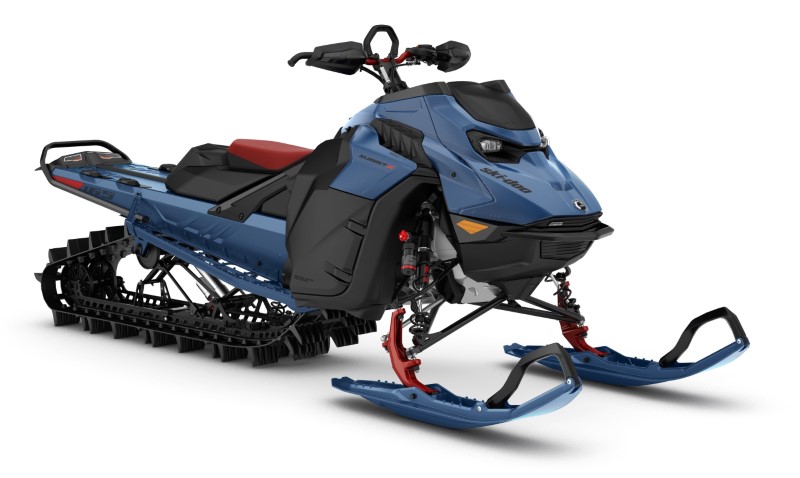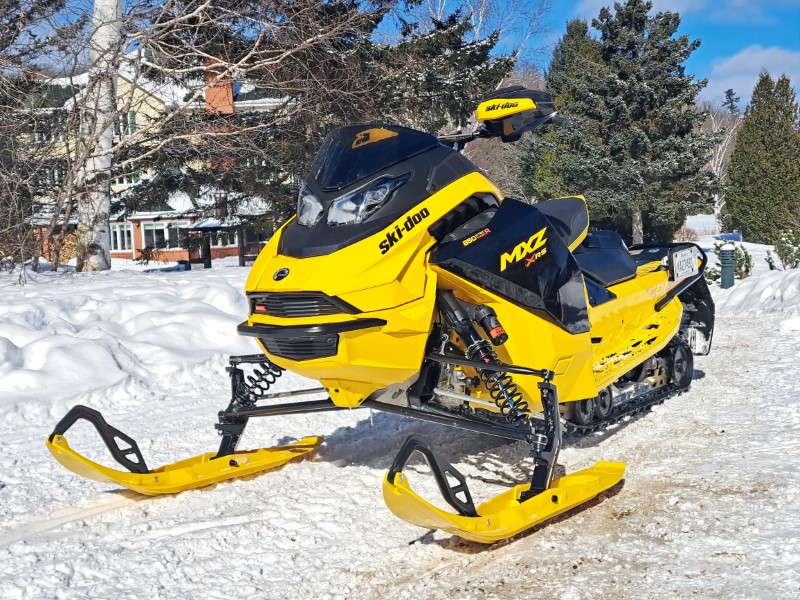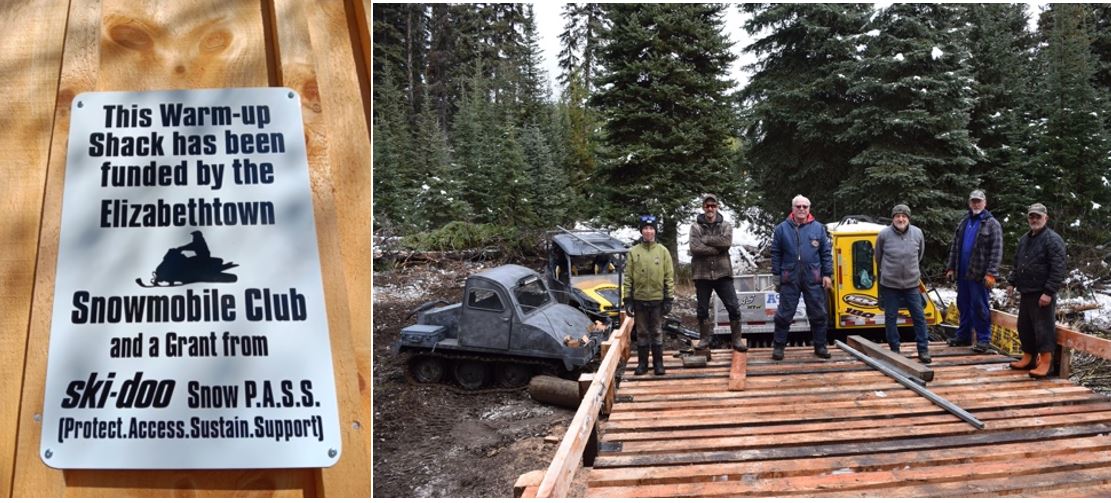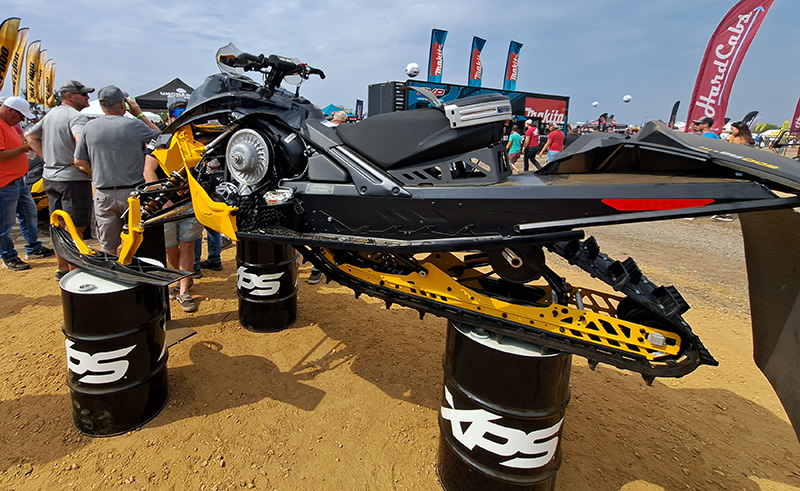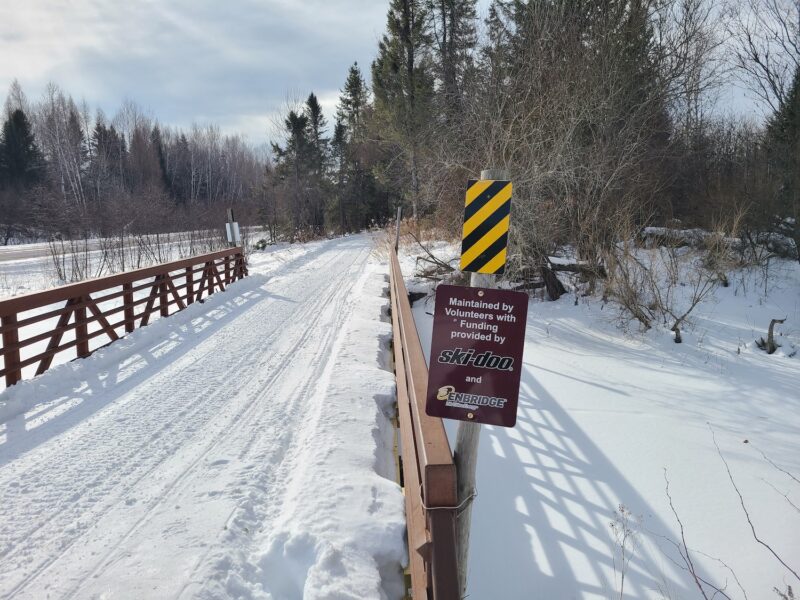Each year, Snow Goer magazine digs deep into the new technology being introduced for the following year with our Tech 101 article, featuring Q&A’s with top engineers, designers and product planners explaining components or features that are new to the sport.
The following interview with Ski-Doo and Rotax designers of the new-for-2019 900 ACE Turbo engine package details how the engine is found in select Renegade and Grand Touring models for 2019.

Ski-Doo: Boosting The 900 ACE To 150 HP
Likely to the disdain of its competitors, Ski-Doo continues to successfully fill all of the various segments within the snowmobile market, including upping its game for 2019 in the high-output four-stroke world with its new 900 ACE Turbo engine.
The 150 hp powerplant, which was first launched in the Can-Am Maverick Turbo sport side-by-side several years ago, has many unique features, but the most notable may be the integration of the first turbocharger ever designed and built by Rotax – BRP’s longstanding Austrian engine division.
The 900 ACE Turbo engine also integrates Ski-Doo’s exclusive intelligent Throttle Control (iTC) throttle-by-wire system and fits into the new REV Gen4 wide body chassis for the new season in Renegade and Grand Touring models. The engine essentially replaces the 130 hp 1200 4-TEC in Ski-Doo’s lineup.
To learn more about how and why Ski-Doo and Can-Am powered-up its 900 ACE engine, we spoke with two of its lead designers, Engineering Project Manager Claude Trahan and Four-Stroke Calibration Team Leader Julien Collin.
SNOW GOER: Let’s go back to the beginning: Were the early goals to power-up the 900 ACE, or was the goal merely building a higher-output four-stroke engine?
CLAUDE TRAHAN: “The demand for high horsepower is always there, and we always try to focus on customer demands. We had to choose between the 900 ACE or the 1200. But, same as in the car industry, the downsizing of engines is a trend that everybody wants to go in. It’s mainly driven by the vehicle dynamics, combined with the lower center of gravity and wanting the vehicle to be as small as possible. This is one of the biggest pillars at Ski-Doo – we want to minimize the vehicle to make sure that the dynamic response and fun factor are there. The 900 ACE has also been proven as one of the industry’s most durable engines. It started at least six or seven years ago that we tried a turbo on the 900 ACE – it had the power but lacked consistency and linearity. We’re talking about lag, so the fun factor was really not there. As a result, we put it off a little bit and thought, ‘Is this something that we want?’ We were using off-the-shelf [aftermarket] turbos because we were not developing turbos at Rotax at that time. We then talked about the possibility of building our own turbo, and that’s when the side-by-side vehicle (SSV) division got involved.”
SG: How were the targets between the snowmobile and SSV divisions different, and why did the snowmobile application launch years later?
JULIEN COLLIN: “We have differences in the engine itself – the environment around it and the calibration. For instance, we don’t run the same compression ratios. The projects were developed at the same time, but the targets are completely different. For the SSV, that market is clearly in a race to build maximum horsepower. For Ski-Doo, the main challenge was the integration into the vehicle.”
TRAHAN: “The center of gravity was so important because we wanted to have [the turbo mounted] as low as possible, and it was totally the opposite on the SSV, where they had space to put it on the upper section of the exhaust. So we said, ‘What can we do with modularity?’ We are sharing the majority of the parts except for the exhaust part, so it installs differently, but the turbo itself is the same size and the same turbine. We also knew we were coming with new REV Gen4 platform, and it didn’t make sense to develop a new engine and have it integrated into the old platform. It’s always a question of the timelines of engine development and vehicle development.”

SG: What were the other early goals, or design pillars as you say, for the Ski-Doo side of this project?
TRAHAN: “We have one pillar that is the same for both the SSV and snowmobiles: reliability. All of the new products that we launch must be very reliable. On the Ski-Doo side, the dynamic response was by far the strongest pillar – how can we make sure that we have good dynamic response and linearity when we drive it, not just to minimize the lag. The third one was the noise. Some like the noise – and we want a good feeling when you start the engine that you know it is a turbo – but as soon as you crank it up a little bit the noise is minimized. It is a request from customers and is also driven by things outside of our industry. The fourth pillar was the size – how we could adapt a four-stroke turbo in the snowmobile without impacting the weight of the vehicle too much to make sure they had good dynamics and good bump performance overall.”
SG: You’ve mentioned “dynamic response” several times. How is that defined and quantified?
TRAHAN: “The best way to understand it may be when you are riding a curve and you want to get out of the curve and get the maximum acceleration, if you don’t have control and if [the acceleration] is not linear because of turbo lag, you will have all the power at one time and the ski will lift and you not be able to control it in the curve. You will need to wait until you are straight before [giving it throttle]. If it’s linear, you will be able to accelerate in the curve.”
SG: What was involved in planning the airflow from the intake through the exhaust and the placement of the turbo?
COLLIN: “The intake system is designed to reduce the pressure drop from outside to the intake ports of the engine. The complete air loop volume is optimized to control the transient aspect of the power delivery – same philosophy for the intercooler. On the exhaust side, the same principles were applied. We have a really small exhaust manifold to improve the exhaust energy that we send to the turbine. The goal is to spool the turbine as fast as possible without any delay. You have to reduce the exhaust pipe volume and keep the heat from the exhaust gases in order to benefit from the maximum energy in a turbo turbine. After the turbo, we also optimized the exhaust backpressure to improve dynamic response.”
SG: Within the turbocharger, you have a rather small turbine spinning very fast – up to 200,000 rpm. What are the advantages of that design?
COLLIN: “To achieve the best transient response you should contain the sizing of the turbo. A big turbocharger will accelerate slowly because of its inertia. Additionally, the thermodynamic optimization (transmission of the exhaust gasses to the turbine) brought us to a smaller turbocharger architecture. The drawback of the small but fast turbine is to have enough boost to produce the power that you want, you will be right at the edge of the maximum speed of the turbocharger.”
SG: Describe how heat management and durability were built into this product.
TRAHAN: “The main concern we had was how to manage the heat in all components, so we did a lot of testing and validation. On the turbo, it was mainly driven by SSV team because they were the first to go into production. The major components of their validation was high horsepower and operation in high temps because they run in desert races. Ski-Doo’s application benefitted a lot from that testing and validation, so it’s almost a bulletproof engine. [Managing heat in the Ski-Doo application] was a challenge because the temperature of the turbos is over 1000 degrees, so we managed that first with the engine’s integration in the REV Gen4 platform. We tried to minimize the pipe temp so we don’t keep too much of the heat inside the body. After that we did a lot of fluid mechanical simulation, working with Sherbrook University to make sure we dissipate all of the heat, and we did the calibration to make sure we optimized the design and minimized the heat of the turbo.”
SG: Ski-Doo marketing officials said that 24-plus specific changes were made to the 900 ACE engine to redesign it for a turbo application. What are four or five key changes that were most important?
COLLIN: “First, the piston has been adapted for higher reliability for a turbocharger – the shape, the right material – in order to ensure the right reliability and the right compression ratio. Second, we strengthened the connecting rod because the cylinder pressure resulting from the combustion is much higher than on the naturally aspirated engine – this is linked to higher horsepower output, so everything must be much stronger. Next, we optimized the cooling of the engine – the coolant and the oil. In order to push back the limit of the system and especially the knock limit, which is really important, we improved the cylinder head and the way we cooled our engine itself. Moreover, the exhaust valves are new, and designed to be reliable for this temperature range. The crankshaft also has been improved and reinforced to be able to manage the higher load.”
SG: Describe how and why the intelligent Throtttle Control (iTC) was integrated into this package.
COLLIN: “We had a lot of challenges to adapt our iTC onto this project. The first target was to ensure power delivery as fast and linear as possible – this improves the rider feeling; being able to feel the response of the power pack is key. As with our full four-stroke lineup, we had the opportunity to give the rider several driving modes with the iTC and these modes have been completely recalibrated and adapted to our turbocharged application. We have a Sport mode – which is as aggressive as we can get it – for use when you want to push it to the maximum for racing or fast trails. We also have the Standard mode, where most people should ride most of the time, plus an ECO mode for the best fuel economy.”
TRAHAN: “It’s very important to understand that we have the Sport and Standard modes for distinct reasons. Just because you buy a 900 ACE Turbo you shouldn’t just think, ‘I want to always ride in Sport, this is why I bought this vehicle.’ The Sport mode is mainly driven for a race/acceleration/lake appli-cations. But, if you are on a curvy or bumpy trail, I prefer by far our Standard mode because you will have better control of the sled.”
SG: Where does this machine shine, and what about this design makes you most proud?
TRAHAN: “The first thing you feel is the power – it is so much fun. We have 150 hp with the turbo and the linearity of the engine itself that makes it easy to control. I also think it’s the overall package – when you combine the REV G4 package, you have everything starting with the suspension and the de-sign of the vehicle, and now you adapt it with the high power four-stroke that fits inside, the fit and finish is extremely well done, and the comfort of the vehicle itself – the seat, wind protection and everything. I think it is by far one of the most refined snowmobiles on the market.”
Every issue of Snow Goer magazine includes in-depth sled reports and comparisons, aftermarket gear and accessories reviews, riding destination articles, do-it-yourself repair information, snowmobile technology and more! Subscribe to Snow Goer now to receive issues delivered to your door 6 times per year for a low cost.

